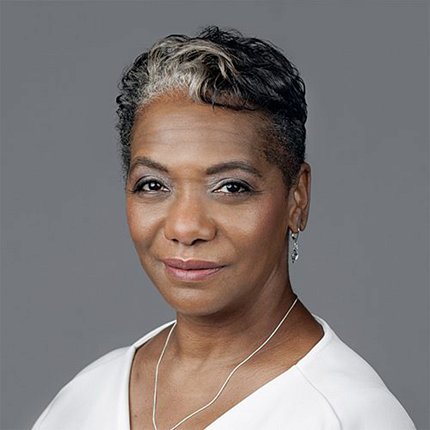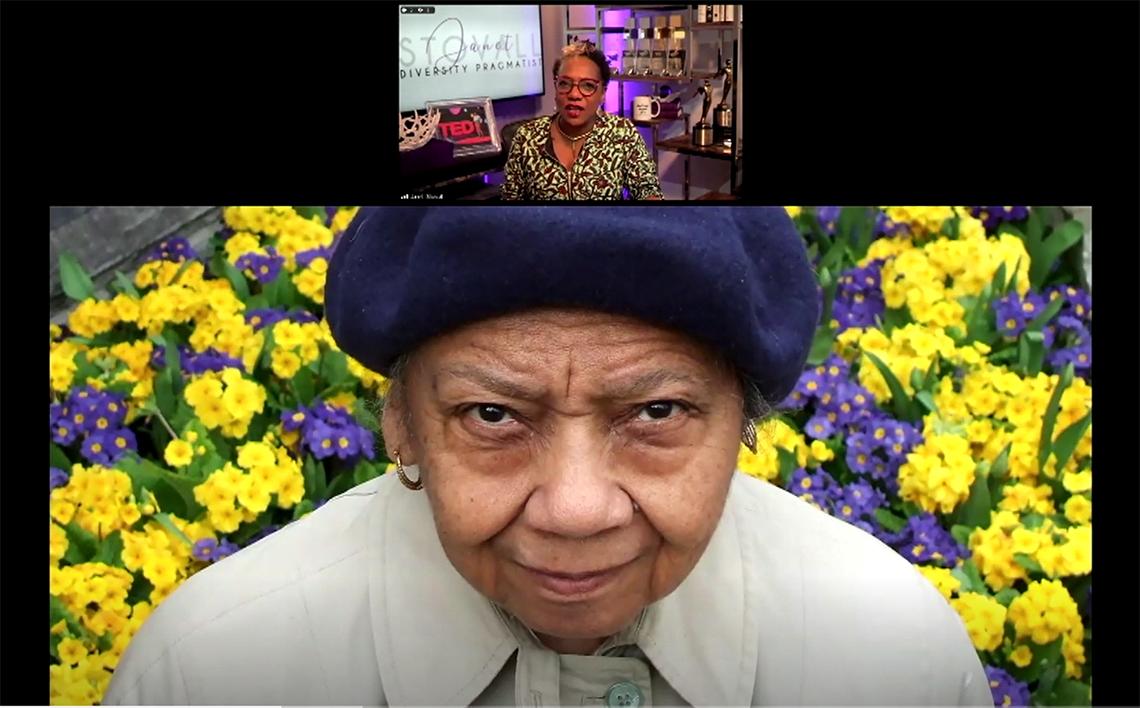Erase, Engage, Enact
Importance of Inclusivity

It began with a story. In the 1940s, a young Black woman named Anne had the right test scores to get into Duke University’s medical school but not the right skin color. She audited classes instead and became a medical technologist—at a Black hospital, the only place Black medical technologists were permitted to work at the time.
Anne was Janet Stovall’s eldest aunt. In a recent NIMHD lecture, “Insights on Inclusion: Erase, Engage, Enact,” Stovall emphasized the importance of inclusive practices at NIH. She is global head of diversity, equity and inclusion (DEI) at NeuroLeadership Institute, a worldwide research and cognitive science firm, and founder of the DEI consultancy Pragmatic Diversity.
“Anne’s story made me mad,” Stovall said. “And I follow what makes me mad, which has brought me here to you today.”
She teaches DEI as a 3-step process: erase, engage and enact. Erase old ideas, engage with intention and enact real change.
Diversity and inclusion are not the same thing, she emphasized. Diversity may be having minority individuals at the table, but inclusion is making sure their voices are heard.
“A seat at the table doesn’t necessarily equal a voice,” she warned. That is why she argues that inclusion is the most important part of the equation.
“Diversity, equity and inclusion are nice nouns, but we need verbs, action,” Stovall declared. “Leveling is the means to an end for [DEI].” By removing barriers for people of diverse backgrounds, everyone can be on more equal footing.

So, how can NIH take meaningful steps toward inclusive practices?
Stovall indicated health disparities as a starting point. While NIH may not be able to solve the gaps in wellbeing themselves, the medical research agency can address some of the root causes, such as representation in clinical trials. Black people make up about 13 percent of the U.S. population, but only 5 percent of clinical trial participants, for example. Latino representation is even more striking: 19 percent of the population and 1 percent of clinical trial participants.
How can NIH change clinical trials to encourage more diverse participation? Ask participants and caregivers what would help, Stovall suggested, and make sure people are compensated for their time, effort and commitment. She also recommended reaching out to target communities to find individuals willing to help with recruitment.
“People need to imagine themselves in a process before they are ever going to insert themselves into that process,” she explained.
Stovall left her audience with a brief task list:
- Focus on the real problems—the ones you can solve, that will make a difference in your space.
- Find ways to measure your efforts and determine whether you are solving the problems you have set out to solve.
- Establish systems of accountability.
“Inclusion begets more inclusion,” she concluded. A truly inclusive NIH can only improve our ability to enhance health, lengthen life and reduce illness and disability for all.
View the archived lecture at https://videocast.nih.gov/watch=45565.
For more on Janet Stovall, see: https://nihrecord.nih.gov/2021/10/15/stovall-discusses-how-have-meaningful-difference-dialogue
